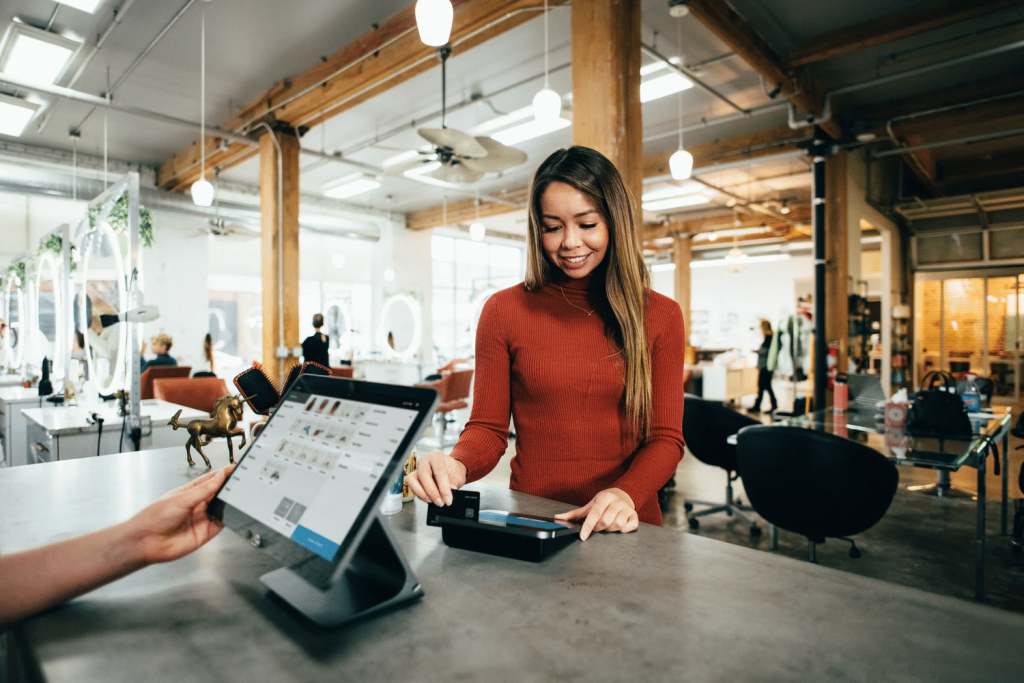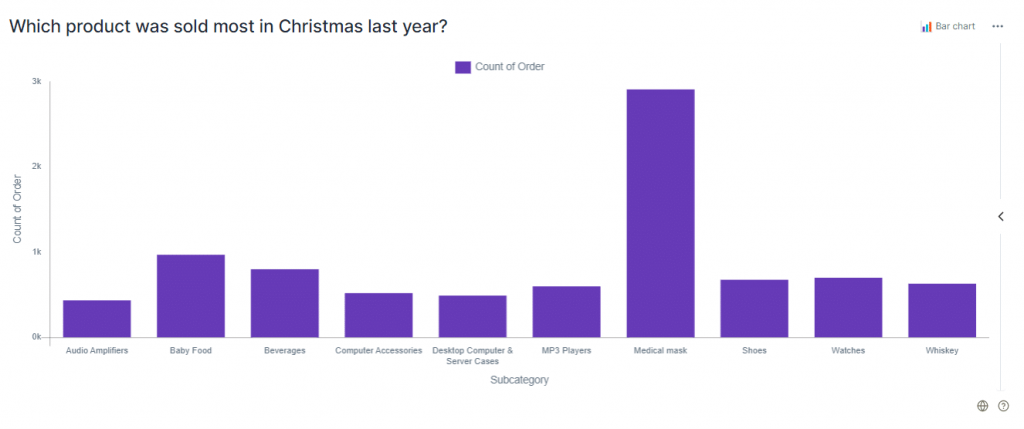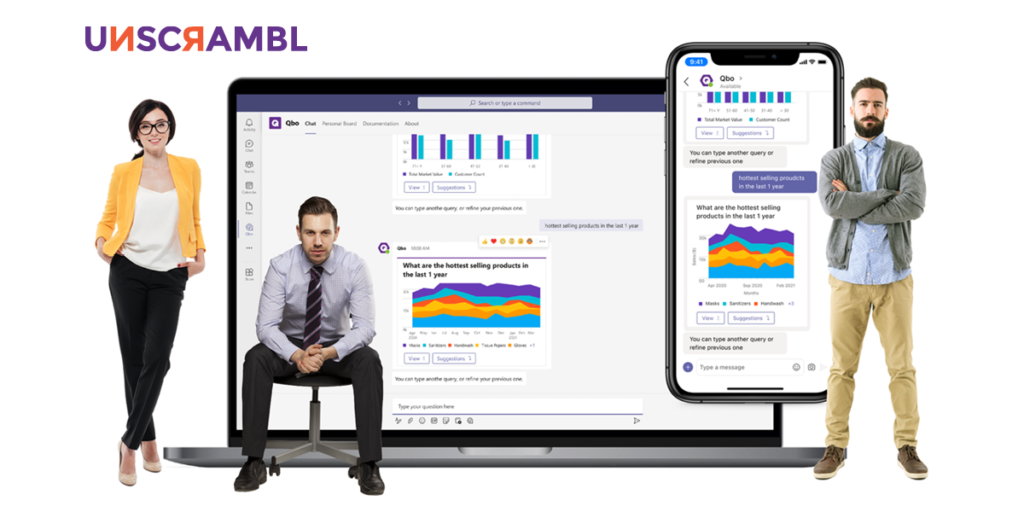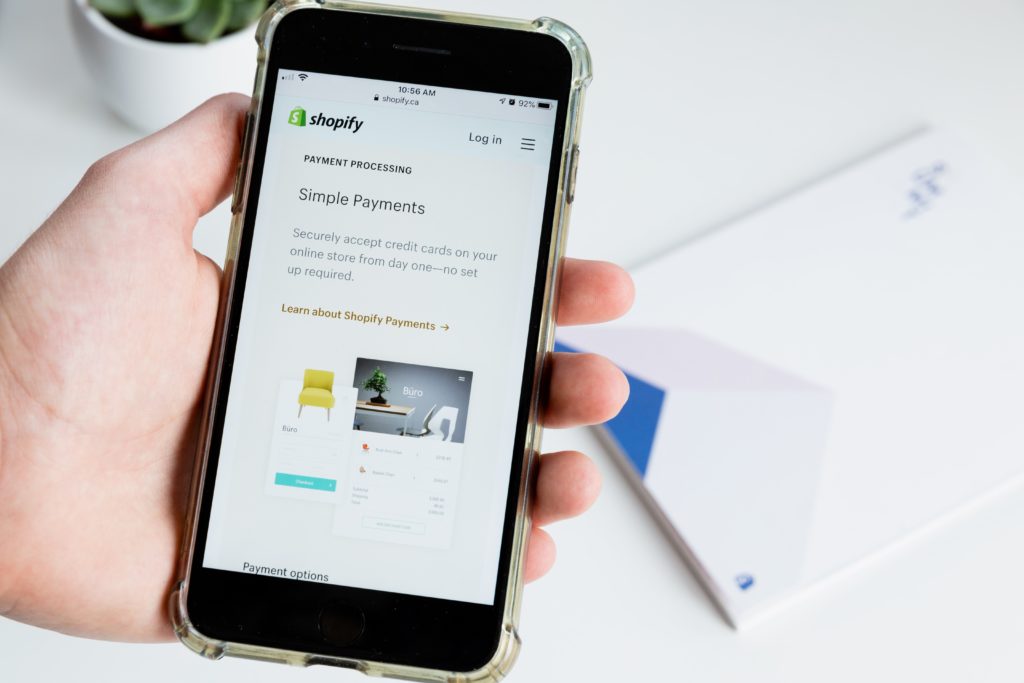 9 Minutes
9 Minutes

8 Reasons Why the Retail Industry Needs Business Intelligence
Retail is one of the most competitive industries in the world. Here innovation and operational efficiency are keys for growth and profitability.
With the rise of e-commerce platforms such as Amazon, customer loyalty is increasingly harder to win over., Especially when consumers are being spoilt for choice when it comes to the way they shop, pay, and get their purchases delivered.
In fact, COVID-19 pandemic has accelerated the way consumers are shopping. With over 9,000 stores closed in the United States in 2019, and an online shopping rise of 30% in the UK in April 2020, retailers have to have adopted a strategy that places more emphasis on their digital storefronts.
However, going digital for retailers isn’t easy either.
According to Nielsen, 600,000 households tried shopping online for the first time during the first weeks of the COVID-19 lockdown. This increased demand has resulted in virtual queues for even the big brands and has also led to an inventory shortage, leading to both losses in revenue and customer dissatisfaction.
This also can lead to customers looking to shop locally or opt for delivery services to get the products they need. One such example is Milk and More, the UK’s largest milk and groceries delivery service, which saw a growth of 25,000 customers.
Thankfully, retail brands have a secret weapon to stay in the game and innovate ahead – the wealth of data being generated daily from their operations.
By tapping on this data, retail companies can continue to keep a competitive edge through the power of business intelligence and drive more profit by staying relevant to the needs of their customers.
Key Challenges Facing the Retail Industry
While the retail industry is known for having tight margins and a trend of decreasing footfall, these stem from how retail establishments are currently set-up.
According to McKinsey, retailers have to pay attention to 3 key changes that will likely happen to the industry as a whole – using China as a leading indicator:
- More consumers will continue to try new shopping behaviors
- More emphasis on value & articulating that value
- More growth in online experiences
The need to innovate is pressing, and that means re-defining the relationship between the consumer and the retailer.
The traditional relationship between a store and a consumer is simply a point of transaction. The shopper browses the available products in the retail place and possibly gets advice from a store clerk.
That means nothing else is known about the customer – their wants, desires, or preferences.
For retail brands to thrive, this customer experience will have to be re-defined and tailored to truly build customer loyalty.
Although buying patterns are moving online, 65% of Americans still prefer to shop at brick & mortar stores with over half citing the need to physically feel and touch their purchase as well as the immediacy of the experience.
However, the benefits of online shopping are undeniable.
During Singapore’s circuit breaker, Redmart (Lazada’s online grocery platform) experienced more than 50% rise in overall buyers. People are still shopping for their goods and necessities, but are doing so online.
KPMG’s Global Online Consumer Report highlights that consumers prefer to shop online versus a physical store due to:
- Better prices (46%)
- Saving time (40%)
- A greater variety of selections (29%)
- The convenience of everything in one location (27%)
This means, to compete, retailers will have to narrow the service gap between themselves and their online competitors while offering a seamless shopping experience.
One great way to accomplish this is to create a fluid online & offline purchasing experience where an online purchase can be immediately collected in-store the same day.
Creating an integrated shopping & omnichannel experience is challenging, but it can be achieved through the power of business intelligence, allowing key retail operations to be optimized with insights gleaned from a retailer’s own proprietary data.
8 Ways Retail Businesses can use Business Intelligence to Compete & Innovate ahead
The ultimate goal of Business intelligence (BI) is to utilize an organization’s data to deliver actionable insights to users, allowing for better decision making. From store transactions to customer feedback, business intelligence will help retailers gain insights into their data, ensuring they can continue to drive growth to their business.
1. BI Helps to Boost Efficiency in the Supply Chain
The retail supply chain can be a complex machine where various inefficiencies can arise, from the factor production to the freight shipping that delivers products to the warehouse.
Supply chains are increasingly becoming more complex as retailers take on more merchants as well as begin to sell more of their own brand products.
The sourcing of merchandise, the various points of sale (both in their brick and mortar and online stores) as well as the different distribution channels makes the supply chain in retail ripe with inefficiencies and under-performing departments.
Key insights can be gained from the data gleaned from your day-to-day operations with the help of business intelligence in Retail.
This allows retailers to create better forecast models as well as identify key logistical bottlenecks that should be sorted out by the supply team to meet their organizational KPIs.
2. BI Helps to Create More Personalized Customer Shopping Experiences
Every customer that walks through the doors is a unique individual with distinct likes, dislikes, and shopping preferences.
Some desire free shipping with their purchases while others want to be informed about the latest products the brand has to offer.
With business intelligence, ground floor staff will be able to create more immersive experiences for each individual customer.
Using data to curate a shopping experience that helps foster a closer connection to brands transcends the transactional nature of online shopping. This can also be applied on a larger scale to target customers as a whole during seasonal periods.
For example, Walmart added a ‘Last Minute Deals’ page on their website, offering items like toys to small kitchen appliances during the holiday season. This allows the retailer to capture more revenue through last-minute impulse buys.
Business intelligence allows retail staff to immediately gain access to each customer’s buying history and preferences, allowing them to tailor a buyer’s journey in real-life to better build brand loyalty through a more personalized experience.
3. BI Helps to Identify Consumer Trends
Which of your products is selling the most?
Are they flying off the shelves due to it being a popular product or is it due to a price promotion that was launched?
From the desire for more socially responsible products to bulk purchases, retailers will need to keep up with the ever-changing tastes of today’s consumer behavior.
Take COVID-19 for example, the pandemic caused a shift in consumer behavior with an increased focus on health-related products and services. An increase in the consumption of healthy foods such as fresh produce, eggs, dairy, and bottled water is seen – a perfect opportunity for retailers to rework their offerings to ride the changing consumer tastes.
The Japanese clothing brand, Uniqlo, has also hopped onto the consumer trend of branded face masks and are creating more hygiene products after receiving large demand from their customers.
Business intelligence in retail allows organizations to identify patterns in their customer purchasing behavior, allowing for marketing teams to rework their inventory and pricing strategies to increase revenues and maximize margins.
4. BI Helps to Optimize Inventory Management
Unlike online shopping platforms that store their products primarily in warehouses before direct shipping to the customer, retailers have more complex inventory management demands.
One of the core reasons customers visit retail stores is to get a product in their hands to test out and for immediate purchase. This means the need to ensure shelves are always stocked no matter the time of day or seasonal change in the year.
This becomes particularly challenging during peak seasonal holidays such as Christmas and the Lunar New Year where the volume of sales will see a spike.
Companies such as Gap and Best Buy have been utilizing their stock rooms not just to replenish their physical inventory in-store but also as a holding place for their customer’s digital purchases.
This allows their retail outlets to be used as delivery bases to effectively ship orders directly to their customers’ homes, which tend to be closer to stores versus their warehouses, allowing retailers to save on their shipping costs.
With access to the right data, retailers will be able to identify demand patterns, unique to each individual store, to allow store managers to effectively decide on the right quantity to pre-order – helping prevent overstocking or understocking.
Conversational Analytics simplifies the process of analyzing vast datasets to allow retail leaders to ask insightful questions such as:
“Which products with the highest margins in our store are being sold out before the end of each month?”
Getting answers to these questions allows retailers to better manage their inventory while maximizing profits.
5. BI Helps Marketing to Craft More Targeted Online Campaigns & Promotions
Many retailers today have an online presence and offer online shopping and delivery to complement their in-store experience.
However, unlike dedicated online shopping platforms, many retail organizations do not have in place big data teams to analyze key customer datasets that include:
- Buyer demographics
- Location of shopping traffic
- Best selling products online
- Seasonal sales trend for online products
- Online customer transactional histories
Retailers with business intelligence will be able to aggregate and analyze data from their online marketing campaigns on social media, in-store purchase history, and behavior on their website storefront.
This allows retail marketing teams to craft highly-targeted marketing messages to enjoy better conversations and drive higher revenue online.
6. BI Helps to Reduce Operational Cost & Expand Intelligently
While managing inventories help with managing cash flow, every retailer has fixed operating costs such as rent and full-time employees as well as variable costs that include utilities and part-time staff.
In today’s competitive landscape, retailers will need to be discerning about their operational expenditure. This means correctly identifying the right stores to control their manpower or operating hours to manage costs.
Retailers need to hire teams to effectively allocate resources and manpower to stores that have trouble keeping up with customer demand while cutting costs on outlets that have seen falling demand. Some have attempted to intelligently pivot to a more ‘holistic rent model’ and factor in data such as the real estate value of a physical store, the online sales a brand brings in as well as their warehouse real estate value.
Only through this new model, will a retailer be able to fine-tune their strategies, have sharper pricing and make better decisions when it comes to expanding their physical presence.
At Unscrambl, using conversational analytics we have helped organizations effectively identify stores and geographies that are performing well with growing customer demand by making complex analytical models accessible to business users. This allows for a more data-driven decision making when planning to expand retail presence across the country.
These include queries such as:
“Which of our retail outlets have experienced a consistent revenue growth of at least 30% over the past three years?” “Which of our retail stores have the highest revenue per square foot over the last 12 months?”
Key questions can be asked to gain insight into the regions that have the potential for a successful expansion.
7. BI Equips the Ground Staff for Better Customer Service
The moment someone walks into a retail store, sales staff on the ground floor has a responsibility to connect with the individual on a human level.
The power of customer service is not to be underestimated and is a driving factor for building customer loyalty.
That means understanding if the person is a new prospect or regular customer with established buying habits.
While face-to-face interactions and advice are invaluable, customers demand exceptional customer service that reduces aggravation while helping them save time.
Business intelligence in retail allows the ground staff to immediately gain insight into customer data captured through the point-of-sale (PoS) systems as well as an integrated CRM software to quickly understand what matters to the customer in front of them.
8. BI Helps to Optimize Store Floor Plans & Product Placement
While sales assistants help shape the buying experience for customers, a big driver is where and how products are displayed.
Effective floor space and product placements is an evolving science that is best decided by on the ground data rather than guesswork or merchant opinions to maximize the revenue per square foot of each individual store.
This isn’t easy though. Each store is unique, constrained by its size and geographic location that determines the customer demographic they serve. Thankfully, retailers can gain insight from the data already being generated by their stores such as ‘dwell time’ and slower-moving product ranges to implement various strategies – from the optimization of floor plans encouraging customers to go deeper into the store to the placements of products optimized for quick and speedy pick-ups.
Stay Competitive in the Retail Game with Business Intelligence Today
Sure, it can seem daunting for retail companies to stay ahead of the competition from both the online space and other retailers, but it doesn’t have to be so.
With the right business intelligence solution, your organization can create DIY data experiences to effectively analyze your data and gain accurate insights on demand.
From your floor staff and your marketing department all the way to the board room, Qbo allows your company to gain insights from your data by simply asking questions as you would in a normal conversation.
Embark on a free 14-day trial today and transform the retail experience for your customers while maximizing your bottom line.





